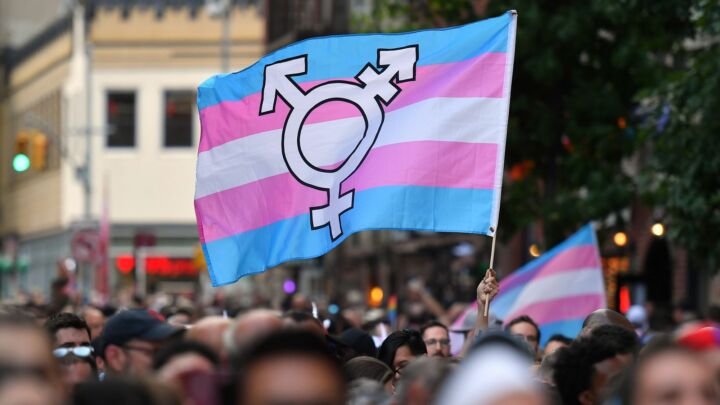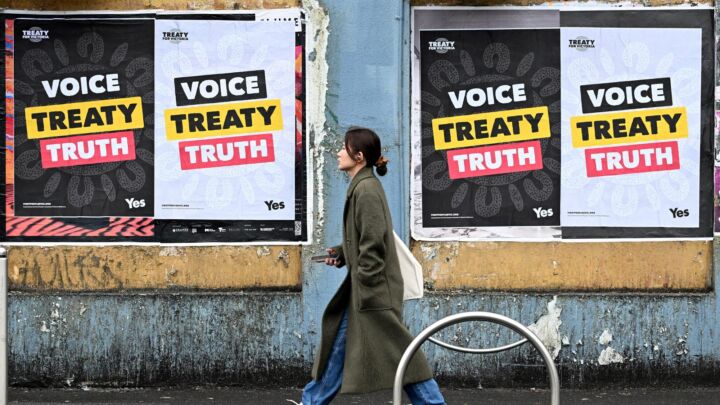An ugly rerun of the Satanic panic
British officialdom’s war on ‘faith-linked’ child abuse echoes its earlier hysterical belief that men in black cloaks were eating babies.

Do you remember the social worker-led accusations of ‘Satanic ritual abuse’ that ripped families and communities apart in the late 1980s and early 1990s?
From Cleveland to Rochdale, Nottingham to Orkney, tens of children were taken from their parents, sometimes for several years. And why? Because officialdom, aided and abetted by organisations like the National Society for the Prevention of Cruelty to Children, were all too willing to believe that normal men and women were locking children in caves, making girls pregnant so as to eat their fetuses, and generally indulging in all sorts of horrific practices. All of which was rubbish, of course, as a government report was finally to confirm in 1994. But not until it was too late – for many unfortunate families the damage was done.
But lessons were learnt, right? Well, no, quite the reverse. The state trusts parents to look after their kids even less today than it did 20 years ago. So it perhaps comes as little surprise that this week the Department of Education, backed by the Metropolitan Police and assorted charities, including the NSPCC, issued a report just as viciously suspicion-sowing as the Satanic ritual abuse theory proved to be all those years ago. Its title is carefully phrased, but the implications are clear: National Action Plan for Tackling Child Abuse Linked to Faith or Belief.
It defines so-called ‘child abuse linked to faith or belief’ as follows: ‘This includes belief in witchcraft, spirit possession, demons or the devil, the evil eye or djinns, dakini, kindoki, ritual or muti murders and use of fear of the supernatural to make children comply with being trafficked for domestic slavery or sexual exploitation.’ And how does the government plan to address this supernatural version of child abuse? Principally by doing two things. First, it wants to make sure we all think that there is a problem. This is to be done by ‘raising awareness’ of the phenomenon of witchcraft-inspired child abuse within a community, something it intends to do through ‘faith leader champions’ and ‘training’ parents. And second, having fomented suspicion in a community’s midst, the state wants to encourage social workers and teachers to look out for ‘indicators’ of faith-linked abuse, such as children talking of ‘deliverance’ or of being in a ‘cave’. (This is eerily familiar to anyone who remembers that the NSPCC dished out its own list of Satanic ritual abuse indicators to Rochdale social workers in the early 1990s.)
And if the soft hackles of the state are duly raised, if someone in authority is able to imagine that a child is living with dodgy, oddly religious parents, the plan then calls for early intervention. In the words of the NSPCC’s current chief executive Andrew Flanagan: ‘Everyone must play their part by watching out for unusual activity and reporting it as early as possible. We must never forget this is about child cruelty not culture and we cannot afford to wait until another child is murdered before decisive action is taken.’
There it is in that last sentence: the shrill justification for routinely suspecting people of creepy, djinn-prompted child abuse, the excuse for imagining all sorts of weird and not-very-wonderful practices going on behind a closed door near you. Because, as opposed to the Satanic ritual abuse sandal of 20 years ago, there have indeed been a few actual cases of horrific child abuse and murder in which the perpetrators claimed to have some sort of belief in the supernatural. But – and this is absolutely key – these cases were not numerous. And they certainly were not indicative of some wider phenomenon. They were isolated and they were exceptional. They grabbed public attention precisely because they stood out for their cruelty.
This is why, in the reporting of the national action plan, there is no litany of mundane examples. Instead, it is the same two infamous cases which are cited as proof of the plan’s necessity: the murder of eight-year-old Victoria Climbié in 2001 by her possession-spouting, dysfunctional guardians; and the murder of 15-year-old Kristy Bamu in 2010 by his weak-willed sister Magalie and her demon-obsessed boyfriend Eric Bikubi. But do these tragic tales of abuse and murder really suggest that there is a link between particular faiths or cultures and child abuse? Do they really justify a government action plan determined to raise awareness of ‘child abuse linked to faith or belief’? Hardly. Kristy Bamu was not abused and murdered by a Pentecostal Christian; he was abused and murdered by a nasty individual, with significant brain damage, who believed he was the ‘chosen one’. Pentecostal Christianity didn’t make Bikubi a child-abusing murderer. Bikubi himself become a child-abusing murderer. This is why, despite the subsequent appeals of parts of the media, he was held responsible for Kristy’s death, not his puported religion.
Of course, the Department of Education is aware that two tragic cases from the past 10 years do not justify a national action plan to address the rarely glimpsed phenomenon of faith-linked child abuse. Hence a statistic is rolled out, too: since 2001, the DoE claims, the police have conducted 86 investigations into ritual or faith-based abuse of children. What it does not mention is that of these 86 investigations, there have only been 17 actual prosecutions. That’s right: so extensive is the problem that, over the course of the past 10 years, just 17 people have been found guilty of child abuse in which some element was deemed to be faith-related. In the context of the millions of people in the UK who practise one faith or another, many of them no doubt believing in the devil or demons, 17 is a drop in the ocean of the non-child abusing devout.
But in many ways, it doesn’t matter if there is no proof of widespread, faith- or belief-linked child abuse. The authorities, just as they did with the Satanic ritual abuse scandal, find it all too easy to imagine the worst of people. The logic is familiarly devious: that there is no evidence of parents abusing children on the basis of demonic possession does not mean parents are not abusing their children on the basis of demonic possession. It simply means that the state has not discovered it yet. Hence, earlier this year, one broadsheet described witchcraft-induced abuse as a ‘hidden crime’. Or, as the Daily Mail put it, ‘Officials suspect grotesque acts continue to thrive behind closed doors, fuelled by a toxic combination of extreme evangelical Christianity and traditional beliefs’.
So, despite the lack of evidence or proof of any actual problem, by launching the ‘national action plan for tackling child abuse linked to faith or belief’, the authorities are asserting that there is a problem to be discovered. And it is up to social workers, teachers and vigilant members of the community, egged on by ‘faith leader champions’, to do the discovering. Rarely has the state been so brazen when fostering suspicion among members of society.
This state-driven creation of a problem is as dangerous as it is reckless. By identifying certain rare-but-infamous examples of child abuse with a culture or a faith-based community – by making faith or belief responsible for crimes instead of individuals – that culture or community is now being transformed into a legitimate object of suspicion and pre-emptive intervention. (The borderline racist undertones of such an approach ought to be clear.) Far from learning the lessons of the Satanic ritual abuse scandal, officialdom seems intent on repeating its mistakes.
Tim Black is senior writer at spiked.
To enquire about republishing spiked’s content, a right to reply or to request a correction, please contact the managing editor, Viv Regan.









Comments
Want to join the conversation?
Only spiked supporters and patrons, who donate regularly to us, can comment on our articles.